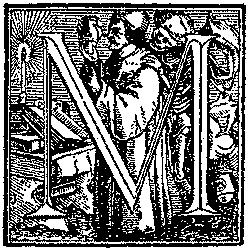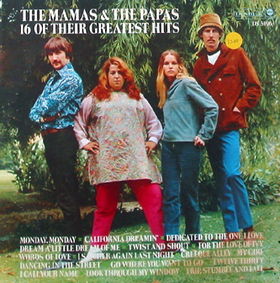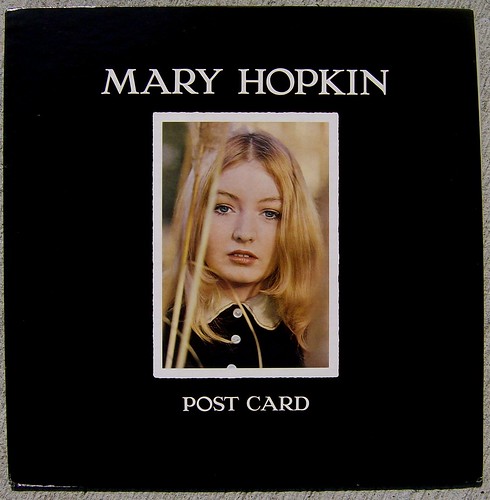"File under sacred music." - blurb from The Cramps' Songs the Lord Taught Us album art
 y doom was to be minorly eclectic.
y doom was to be minorly eclectic.There just wasn’t any way I was going to avoid it. I grew up in a house with parents who were fairly music-adept. My mom was 18 years old in 1954. I have a box of original 45s from Sun Records and Chess. Hank Williams multi-disc 45rpm sets. Chuck Berry’s “Deep Feeling”. A deeply grooved Gene Vincent. Even a Cameo of Charlie Gracie’s “Fabulous”. All artifacts from my mother’s youthful musically-inclined ear.
But my parents never stopped acquiring music (mostly records) for most of their 54 years (currently) together. By the time I was old enough to peer up at the shelves and shelves of records that spanned the walls of the living room in my parents’ house they had delved into nearly every modern genre, from the American song book to standards to jazz and vocals to country and folk and what I would spend a large part of my youthful days disparaging as “hippie shit” (Mary Hopkin, The Mamas and the Papas, Peter, Paul & Mary…). I even acquired my first Ken Nordine record out of my parent’s collection, but that’s another story.
Certainly my parents were too old to be inclined to follow post 1970 musical developments, and they were never Beatles, Led Zeppelin, nor post-1963 rock n roll people, so there was a cap on the breadth. But I’m not going to complain. Imagine thinking about trying to ingest that wall of music. What was it all supposed to mean? Who the heck was this Guy Lombardo guy? Who was Harry Belafonte? What does this mean, Handel’s Messiah? How is Handel’s messiah any different from that one they talk about in church? What are American Railroad Songs and why should I be interested in them?
It was also challenging that my brother, fourteen years my elder, became an avid record and music collector as well. Also not a fan of the acid-rock revolution he was born into, I owe him for a continual dosage of Johnny Cash, Hank Jr., and Gordon Lightfoot.
And my sister? Seven years my senior, my sister lived Martha Coolidge’s Valley Girl. I owe her for exposure to the birthing throes of KROQ, second wave ska, The Stray Cats, the resurrection of my mother’s dust gathering 45s, and a worn out Depeche Mode cassette. Then she graduated high school and dragged hip-hop into the sonic menagerie I encountered on a daily basis.
So I did what any good kid who was immersed in this veritable cornucopia of musical opportunity would do. I started listening to gangsta rap.
Actually, that’s not quite the truth. When I first determined that I would come into my musical own, I turned on the clock radio in my room that had never uttered a peep except to klaxon me into wakefulness in the morning. The one thing I found that was different from all the offerings in my home was classical music. I don’t even remember the station. It was somewhere way down on the left hand end of the dial. It may even have been AM for all I remember. But it was different, and in light of the rest of these music purveyors inhabiting my living space, it was mine.
So I listened to classical music. I didn’t know the composers. The complicated titles of the compositions meant nothing to me. No attention was paid to this orchestra or that orchestra or such and such a conductor. But that’s what was in the background of my homework and model-building and whatever else I accomplished in my room as an adolescent. I don’t know what my family thought of it. Perhaps they thought it was odd. Maybe my parents thought I would grow up to be “cultured” or something. I don’t know. I don’t recall anyone ever commenting on it.
Then, one day, one of my sister’s boyfriends gave me a copy of Sir Mix-a-Lot’s “Swass”. I apparently approved, because then he loaned me NWA’s “NWA and the Posse” and Ice T’s “Power”. Being the logical individual I am, I was of course curious about the Intro and Outro tracks of “Power”, so along came Ice T’s “Rhyme Pays”.
So then I listened to classical music and gangsta rap.
And that’s pretty much the way it went for me all through middle school and into high school. My headphones were pumping one of two things into my ears… something akin to Wagner’s “Ride of the Valkyries” or something like Eazy E’s “Eazy Duz It”. I don’t really have an answer for the appeal of gangsta rap as a genre to a middle class white kid from the San Fernando Valley . I certainly wasn’t much of a rebellious type. For whatever reason, it just clicked. Somewhere along there I also acquired an interest in film music, probably via the renditions of Wagner used in Boorman’s “Excalibur”, but ultimately it was probably because it reminded me of classical.
Then, in 10th grade (back then, high school started with 10th grade), someone pressed a cassette tape into my hands with instructions to listen carefully. This was an album called “Disintegration” by a band called The Cure. I vaguely remembered seeing a Cure shirt on a guy in middle school. But this guy was also a devoted Beatle-maniac and talked continually about GREASE (the musical). I didn’t know what to expect. But I listened to it.
To say that it put a speed bump on my classically gangsta rap highway would be sort of an understatement… but to say that I didn’t like it would be a lie. It intrigued me deeply, actually. I don’t know if I was aware of it at the time, but in looking back I can understand that there was enough of a musical connection between spoken word numbers like “Lullaby” and my rap/hip-hop leanings to create a stamp of approval. But atmospheric songs like “Untitled” were classical-ish and soundtrack-ish enough to also retain validity. In short, I realized I had a new musical strain to delve into. Several times I fell asleep and awoke to that album, the flip and reverse cycle on the walkman working overtime through the night.
Don’t let it be thought that at any time I despised or rejected the musical heritage my family imbued me with. I was always cool with whatever it was that my brother or sister or mom or dad was spinning (except maybe my dad’s propensity for Carly Simon and Carol King… I just never could abide by them). But, as most youth probably do, I was looking for something to call my own. What ended up happening, however, was I ended up with what seemed like a plethora of disparaging musical strains that didn’t seem to make sense together.
And so it went. The collecting of this and that into my musical interests until everyone thought I was just too strange in my musical leanings. My sister was fine with Tony Tone Toni, but wouldn’t return to the Depeche Mode she had dumped on me years prior. My brother was fine with Johnny Cash, but could I please turn off that Dead Can Dance stuff? Dad was fine with Tiny Tim, but Run DMC was not going to be okay… ever.
To further complicate matters, late one night I came across the late great Warren Kolodny’s “Stay Awake” program on KCRW. His guest DJ that fateful night was none other than Byron Werner, purveyor of all things Juan Garcia Esquivel and what he coined as “Space Age Bachelor Pad Music”. I was instantly enraptured by this complex, hard to pigeon-hole mid-century lounge music. Sure, my parents had the standard Ferrante & Teicher quotient and the smattering of the Rat Pack, but their collection did not dig as deep as Alvino Rey or Esquivel. I was caught up.
Much to the chagrin of those who associated with me, I was then on a rampage of mid-century instrumentalism. Orchestral lounge music, surf, and instrumental rock made certain that no one ever wanted to ride any distance with me in my car. Except my cousin Sean. Also an investigator of the odd and off-beat he seemed to get it. But we were in a lonely understanding.
But still there did not seem to be a thread of uniformity in my listening pleasures. I was resigned to the fact that I was just a musical weirdo… too eclectic for my own social good. Then one day a friend pushed a couple CDs into my hands. He said, “Here. Since all you’ll listen to is that guitar instrumental stuff, you will probably like this.” The CDs were a copy of The Cramps’ “Bad Music for Bad People” and a combo disc of their EP “Gravest Hits” and the seminal “Psychedelic Jungle”. I expect it was his hope to shake me back into some semblance of tolerability.
And it did shake me up. There was a dramatic affinity in me for The Cramps from the first time I spun those CDs. And it wasn’t necessarily that they were anything “new”, per se, but they were certainly “out of the ordinary”. I identified that punk-goth-weirdo rocker aesthetic instantly… but what really fascinated me was that, despite the fuzz and the grind and the ooze and the moan and groan and snarl, I recognized that music as crawling from the records on my parents’ wall. Those 45s and LPs of my mom and dad’s, as well as my brother, had been dragged through the tapes and radio of my sister’s and those of my own youth, and out had popped The Cramps.
In those recordings there was an identifiable but indescribable link between everything I had been indoctrinated with musically while growing up. It contained the delirium of psychedelia, the brute force of punk, the forlornness of country, the desperation of the Delta, the lyrical recital of hip-hop, the innocent double entendre of rock n roll, the atmospheric repetition of electronic and industrial, the misery of Gothicism, and the illumination of the cathode ray, all wrapped into one aggressively complex offering. Lux Interior and Ivy Rorschach had groped back into the American musical psyche that had been buried by Beatles-mania and dragged it, kicking and screaming, into the latter 20th century. They bathed it in the taboo and rubbed musical America Americana
You see, The Cramps had a way of culling through the obscure and finding the overlooked yet valuable, feeding it through their own creative meat grinder, straining it through the post modern musical mentality, and unleashing it again upon an unwary and unsuspecting audience. It makes me sad when I think of all the Hasil Adkinses and the Charlie Featherses that I may not have encountered in my musical journey had it not been for the vigilance of Lux Interior and his musical cohorts preserving them for me. And yet, they preserved the legacy of American music in such a personal manner that it also revealed the interconnectedness between so many seemingly disparate musical stylings. “Yes,” The Cramps seemed to always imply with each ground out chord and soulful yowl, “it really is all just the blues.” Later on down the road, this implication that I learned from The Cramps seemed solidified by learning that such seemingly far ranging artists as Hank Williams, Martin Gore, Alan Wilder, and Jimi Hendrix collected and drew inspiration from blues, hot-jazz, folk, and old timey musics. But it was that introduction to The Cramps that I look back on and see as the moment that I realized it all made sense.
With the second anniversary of Lux Interior’s untimely death approaching (he gave up the ghost on February 4th, 2009), I find myself glad that I had the opportunity to see them perform twice in the twilight of their twenty-some-odd year career. Once at the 2004 Hootenanny and a second time at Sunset Junction in 2006. I remember they headlined the Sunset Junction show, the last act of the night to grace the main stage, and the LAPD shut down the event just before Lux had the opportunity to shed his pants. It was almost as if they had been waiting for the moment. Some people have no sense of theater.
The Cramps. I owe them the recognition of being the source of coherence amongst my varied and divers musical interests. And while I doubt I would ever be inclined to rub my family’s nose in them, I also thank The Cramps for focusing an appreciation in me for the many colored musical umbrella I grew up under. Most of all, though, I give them credit for teaching me to dig deeper under the musical surface than I may ever have been inclined to do on my own.
- Squeezebox Sam










No comments:
Post a Comment